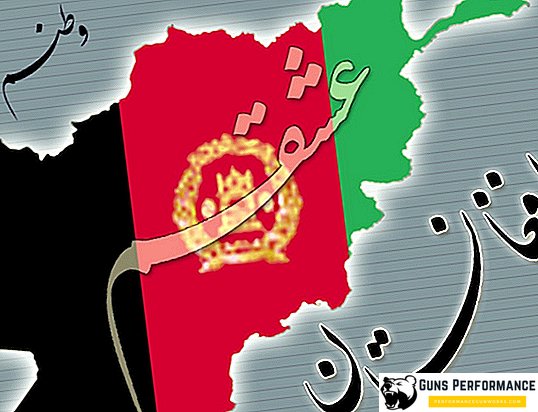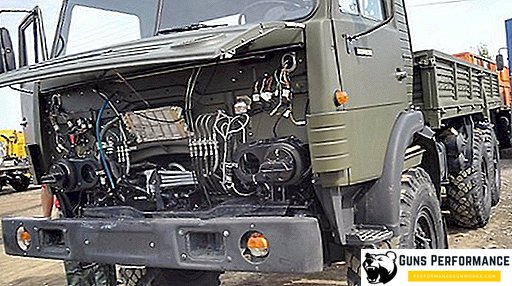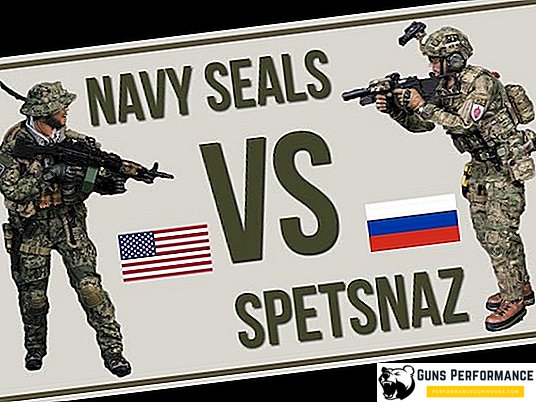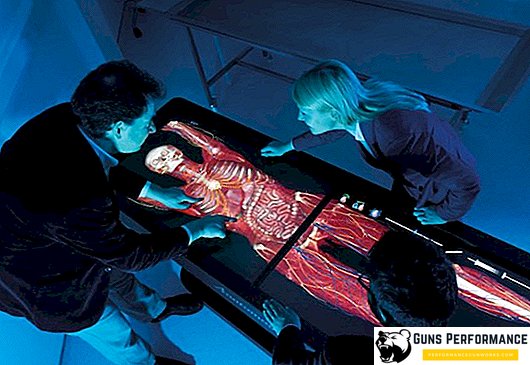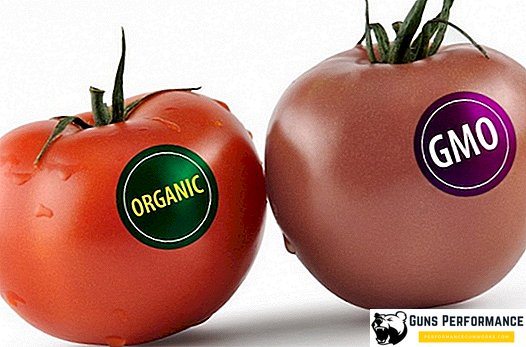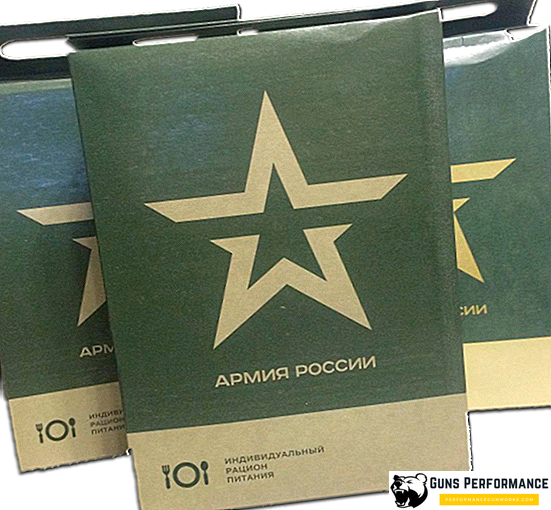
The combat capability of a fighter depends on his moral and volitional qualities, skills of handling weapons and military equipment, as well as physical fitness. However, the supply of military personnel is no less important - as you know, you cannot fight a lot on an empty stomach. Not only the physical condition of the soldier, but also his morale depends on food on the front line.
An ideal way to feed a soldier is fresh, hot food made up of several dishes cooked in a field kitchen. However, this is not always possible, and in this case in the army there is a dry ration, or an individual food ration (IRP) - this is what it is officially called. Sukpay is a set of products intended for feeding military personnel in cases where it is not possible to prepare fresh hot food. In other words, suhpay is food for field conditions.
Most often, dry rations are associated with military service. But it is rather a tribute to the habit. Modern IRP calories, tasty and prepared according to the recommendations of nutritionists. Dry rations are easy to buy for free sale, it is popular with tourists, fishermen, hunters, climbers - in short, those who spend a lot of time away from civilization.
An army ration can be designed for both a single meal and a person’s food for the whole day. Nowadays, the issue of power fighters paid much attention. IRP are developed on the basis of serious scientific research and practical tests. Dry ration of the Russian army is no exception. Domestic suhpay perfectly balanced in protein, fat and carbohydrates, has the necessary calorie. It is calculated on the basis of the energy costs of a soldier in a particular situation. For example, a dry mountain ration has a higher calorific value compared to a regular army RPI.
By the way, according to the Russian standards, the continuous feeding of the personnel of the IRP should not exceed seven days.

IRP requirements
An individual diet should meet fairly stringent requirements, first of all, this refers to the composition of the products that are included in the IWP. Suhpayek should:
- Long stored. That is, its composition should not include perishable products: mayonnaise, fresh fruit, raw meat, etc.
- Contain foods that are already ready to eat, or those that can be easily and quickly cooked.
- Be easily digestible. That is, the composition of the IRP should include products that do not cause digestive disorders or allergies
- Have a convenient and reliable packaging, which even in field conditions sufficiently protects products from the effects of water, dirt, mechanical damage. In addition, the packaging should be convenient for the fighter to eat.
- Have a balanced nutritional composition and fully meet human needs in calories and essential nutrients and vitamins.
These are the basic requirements for a modern IRP in any army, in addition, today much attention is paid to the taste of suhpayka.

The usual composition of the IRP and products that are prohibited to be included in the dry spike
Usually the following foodstuff is a part of army dry rations:
- Canned food: stew, condensed milk, canned cereal, stew
- Sublimated or dried foods: instant soups or borscht, dried fruits, milk powder, instant coffee, juices
- Crackers, crackers or biscuits
- Vitamins and nutritional supplements (spices, salt, sugar)
In addition to products, the army suhpayka should include disposable dishes, napkins, devices for heating food and water disinfectants. As a rule, water is not part of the IRP. To heat products, dry fuel and various burners of the simplest design are usually used. Previously, a dry ration of some armies also included cigarettes and condoms, but this practice has long been abandoned. As a rule, the products included in the dry ration can also be consumed cold, but in this case they will be not so tasty and less easily absorbed by the body.

The composition of dry rations should not include:
- Any perishable products that require special conditions for storage (temperature, humidity level, etc.)
- Products that include alcohol, a large number of spices, natural coffee, confectionery and cooking oils, table salt with a content of more than 0.8%, most preservatives
- Confectionery with a high cocoa content or with cream fillers in its composition
- Fresh fruits and vegetables
- Any food, the quality and safety of which is not confirmed by laboratory tests

A little history of dry rations IRP
The issue of food supply of the army during the war or campaign was a real headache for military leaders of all ages and nations. It has long been practiced various methods of cooking concentrated nutritious food, which can be stored for a long time.
Nomadic peoples placed thinly sliced pieces of meat under the saddle — it was very quickly salted with horse sweat and turned into a nutritious product of long-term storage. The Mongols dried and ground the meat and bones of animals, getting from them the analogue of modern bouillon cubes. Of these, you could quickly cook a hot broth or stew. The Aztecs made balls of dried cocoa fruit. Medieval Japanese ninja warriors had special nutritional balls.
The real revolution in providing the army with provisions occurred in 1795, when a revolutionary way of preserving products was invented. He was invented by the French chef Upper, for which he was awarded a gold medal by Napoleon and a large cash prize.
In 1810, the Englishman Durand began to produce canned food for the royal navy. To do this, he made tin cans, tin tin.
In the Red Army, the first Sukhpay soldier appeared just before the beginning of World War II, in the spring of 1941. The reason for this innovation was the dramatic experience of the Soviet-Finnish war, during which the Red Army was faced with serious problems related to the provision of food to military personnel in combat.
The winter war showed that it is far from always possible to supply food to the troops regularly and in a timely manner, not to mention hot meals. And this problem was so serious that it was discussed at the level of the Central Committee and the General Staff.
The Red Army food supply service was tasked to develop for the army a set of food items that would have a small weight and volume (that is, could be carried by each fighter), was stored for a long time in any conditions (heat, cold) and did not require lengthy preparation and processing.
Suffering dry rations in the Red Army was officially adopted on May 15, 1941. Various concentrates became the basis of the IRP, which could be quickly prepared by adding boiling water to them. It should be noted that these concentrates were not intended for individual feeding of the fighter, more often they were given out to small units that were forced to act autonomously without delivering food. Although, of course, concentrates could be given to each fighter separately. In addition, such food still required some cooking operations - this is another difference from the current PRI.

At the same time, the daily allowance of one soldier’s food with dry rations was approved, in addition to concentrates, there were rye crackers (600 grams), half-smoked sausage (100 grams) or canned meat (113 grams), roach dried or smoked (150 grams) ), or cheese, cheese (150 gr). In addition, the ration included sugar, tea and salt. According to these standards, each fighter was entitled to 75 grams of concentrate soup and 200 grams of porridge from concentrate per day.

In the post-war USSR, the main emphasis in the soldiers' field nutrition in suhpayka was placed on canned food. There were several types of IRP, their composition was prepared on the basis of the loads experienced by the fighters. The mountain ration was considered to be very nutritious (it consisted of chocolate and bacon), but the infantry was fed much more modestly. In the 80s, a can of meat canned food (250 grams), two cans of "meat and cereal" (usually rice or buckwheat with meat), crackers or biscuits (300-500 grams), a bag of tea brew and sugar. In the USSR, they also didn’t “bother” with the general packaging of the suhpaya: at best, the products were in a cardboard box, but more often they were given out to the fighter in bulk. The caloric content of Soviet rations ranged from 3100 to 3350 kcal.

The last time changes to the dry ration of the Soviet soldier were made in 1990 (order number 445). After that, the life of a soldier became a little sweeter: condensed milk and canned juice were added to the army suhpay.
Individual diet of the Russian Army
After the end of the Cold War and the collapse of the USSR, specialists in the rear of the Russian army were faced with the task of developing a new dry ration to provide servicemen in the field. The Soviet Sukhpay soldier in canned food not only did not correspond to the new realities of modern warfare, but simply looked like a mockery against the background of the Western armies flashing on the IRP TV.
In the mid-1990s, an individual ration was developed for military personnel of the Russian army: it was prepared in two forms at once: IRP-B (combat) and IRP-P (everyday). The composition of these sukhpaykov was officially regulated by order of the Minister of Defense dated July 24, 2000.

IRP-B contains 3590 kcal, and IRP-P contains 3360 kcal.
Compared to the Soviet Suhpay, the new IRPs looked like aliens from another planet. They significantly exceeded the Soviet counterparts in all parameters: the range of products, taste, convenience of packaging. Fish canned food, dry drinks, dried fruits, tea, milk, instant coffee were added to canned meat and canned cereal.

Both rations are made in several versions, each of which contains its own range of products. Therefore, they do not "bother" the soldiers. New dry rations received modern plastic packaging, comfortable and airtight. She had a handle with which the suhpay could be easily mounted on equipment or "armor." Means for warming up food, matches resistant to wind and moisture, napkins, plastic spoons and a knife were included in the rations. The packaging was divided into three compartments, each of which contained a set of products for breakfast, lunch and dinner. IRP-B is not too different from IRP-P, the latter is slightly less in mass and caloric content.

For reconnaissance and special purpose units, a small-sized dry ration was developed, containing foods with a higher caloric content.
In 2014, at the initiative of the Minister of Defense Shoigu, the design of the IRP was changed; from 2018, the same packaging was introduced for all army dry rations.
Currently there is a large list of different types of dry rations, each of which is intended for special cases:
- Emergency. This is a set of food for the crews of airplanes and helicopters that crashed (laying rate No. 20). There is also a "sea" version of this sukhpayk, it is intended for personnel in distress at sea and located on rescue equipment (norm of bookmark No. 19).
- Daily. This is an IRP-P.
- Reinforced. IRP-U.
- Combat. IRP-B (laying rate number 9).
- Mountain. RPG (norm laying number 10).
- IRP FSB.
- IRP FSB "Mountain".
- Group dry ration - GRP-10.
- One-time diet (norm number 22).
- Additional ration for donors (norm number 21).
- Diet for divers - ARP (norm number 18).
- Ration for pilots of airplanes and helicopters - BRPESV (norm No. 17).
- Dry rations for military personnel serving under exposure to radiation or dealing with toxic chemicals.
- The ration for the crews of airplanes and helicopters at alternate aerodromes - RPESV (norm No. 12). Sukhpay is designed to power pilots on the airfields of the jump, where there is no possibility to get hot food.
The most common of these is Suhpay IRP-P.
Dry rations of foreign armies

Dry rations of different armies of the world are developed according to similar principles, they are tasty and high in calories. Usually they bear a noticeable imprint of the national cuisine and culinary preferences of the people. For example, the ration of the South Korean army contains a large amount of rice and spicy pickled cabbage. In the countries of Scandinavia, soldiers are given fish with sour cream, suhpay of the German army contains a lot of meat, and Polish - pate and canned meat.
One of the most well-known dry rations is the American Army RPD. It is called MRE (Meal Ready to Eat - "ready-to-eat meals"). This ration has 24 menu options; it is packed in sand-colored plastic on which the menu number and its main course are written. The package is designed for one meal. In addition to products, instant tea or coffee, as well as powdered lemonade, are part of the MRE package. For heating food, each set has a bag with a chemical heater, and it also contains disposable spoons, matches, toilet paper and wet wipes. Energy value - 1300 kcal.

In addition to MRE, the American army has other types of dry rations:
- Sukhpay FSR (First Strike Ration), it is designed for military personnel performing their tasks in conditions of increased physical exertion. Designed for 72 hours. Energy value - 2900 kcal.
- Dry ration LRP (Long Range Patrol). It is also designed for heavy physical exertion (like FSR), but lasting for a long time. Contains 1540 kcal.
- Suhpay MCW (Meal Cold Weather). Designed to perform tasks in cold climates, most often this Sukthai is used by the Marines and SSO. Contains 1540 kcal.
- HDR (Humanitarian Daily Ration) - "humanitarian" dry ration, designed to power the victims in the disaster area. Designed for meals during the day. Suitable for people of all religions, as it does not contain animal products and alcohol, even in wet wipes. On the packaging with the help of drawings shows how to properly handle rations, so that it fits even an illiterate person.

The Italian dry ration includes 50 ml of 40-degree alcohol and a heater, pasta, bean soup, instant coffee with cream, canned turkey, rice salad, fruit salad or chocolate muesli.

French suhpay will satisfy the most spoiled gourmet: venison pate, cold cuts, Creole pork, cream pudding, powdered drink, muesli, coffee and caramel. There are sets with beef dumplings and salmon pate.

The Germans also do not mind eating well. Their individual ration includes: liver sausage, rye bread, goulash with potatoes, biscuits, jam in assortment and exotic juice in the form of powder.
Polish dry rations are designed for two meals, they contain the following products: two jars of meat or pasta (meat or cheese), two bags of hard crackers, condensed milk, two sachets of instant coffee, tea bag, sugar, vitamin C tablet, chewing gum, matches, paper towels.



